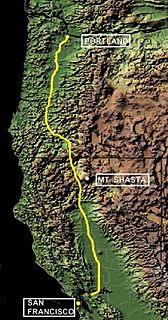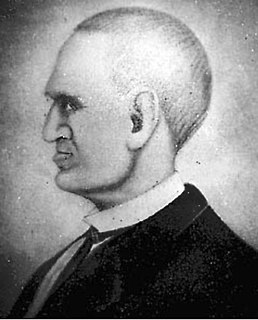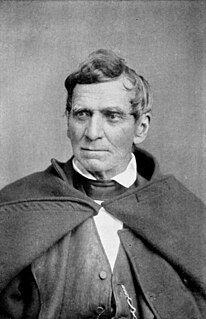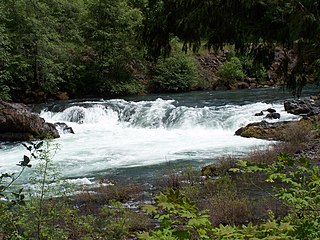This article needs additional citations for verification .(January 2010) (Learn how and when to remove this template message) |
| South Umpqua River | |
|---|---|
 The South Umpqua near its confluence with the North Umpqua | |
| Etymology | Indigenous people's name for the region near the river [1] |
| Location | |
| Country | United States |
| State | Oregon |
| County | Douglas |
| Physical characteristics | |
| Source | Confluence of forks near Fish Mountain |
| - location | Northwest of Crater Lake, Cascade Range |
| - coordinates | 43°06′26″N122°35′22″W / 43.10722°N 122.58944°W [2] |
| - elevation | 2,009 ft (612 m) [3] |
| Mouth | Confluence with North Umpqua River |
- location | Near Roseburg |
- coordinates | 43°16′04″N123°26′46″W / 43.26778°N 123.44611°W Coordinates: 43°16′04″N123°26′46″W / 43.26778°N 123.44611°W [2] |
- elevation | 361 ft (110 m) [2] |
| Length | 115 mi (185 km) [4] |
| Basin size | 1,800 sq mi (4,700 km2) [5] |
| Discharge | |
| - location | near Winston, about 20 miles (32 km) from the mouth [6] |
| - average | 2,747 cu ft/s (77.8 m3/s) [6] |
| - minimum | 16 cu ft/s (0.45 m3/s) |
| - maximum | 125,000 cu ft/s (3,500 m3/s) |
The South Umpqua River is a tributary of the Umpqua River, approximately 115 miles (185 km) long, in southwestern Oregon in the United States. [4] It drains part of the Cascade Range east of Roseburg. The river passes through a remote canyon in its upper reaches then emerges in the populated South Umpqua Valley east of Canyonville.

The Umpqua River on the Pacific coast of Oregon in the United States is approximately 111 miles (179 km) long. One of the principal rivers of the Oregon Coast and known for bass and shad, the river drains an expansive network of valleys in the mountains west of the Cascade Range and south of the Willamette Valley, from which it is separated by the Calapooya Mountains. From its source northeast of Roseburg, the Umpqua flows northwest through the Oregon Coast Range and empties into the Pacific at Winchester Bay. The river and its tributaries flow entirely within Douglas County, which encompasses most of the watershed of the river from the Cascades to the coast. The "Hundred Valleys of the Umpqua" form the heart of the timber industry of southern Oregon, generally centered on Roseburg.

Oregon is a state in the Pacific Northwest region on the West Coast of the United States. The Columbia River delineates much of Oregon's northern boundary with Washington, while the Snake River delineates much of its eastern boundary with Idaho. The parallel 42° north delineates the southern boundary with California and Nevada. Oregon is one of only three states of the contiguous United States to have a coastline on the Pacific Ocean.

The United States of America (USA), commonly known as the United States or America, is a country composed of 50 states, a federal district, five major self-governing territories, and various possessions. At 3.8 million square miles, the United States is the world's third or fourth largest country by total area and is slightly smaller than the entire continent of Europe's 3.9 million square miles. With a population of over 327 million people, the U.S. is the third most populous country. The capital is Washington, D.C., and the largest city by population is New York City. Forty-eight states and the capital's federal district are contiguous in North America between Canada and Mexico. The State of Alaska is in the northwest corner of North America, bordered by Canada to the east and across the Bering Strait from Russia to the west. The State of Hawaii is an archipelago in the mid-Pacific Ocean. The U.S. territories are scattered about the Pacific Ocean and the Caribbean Sea, stretching across nine official time zones. The extremely diverse geography, climate, and wildlife of the United States make it one of the world's 17 megadiverse countries.



















